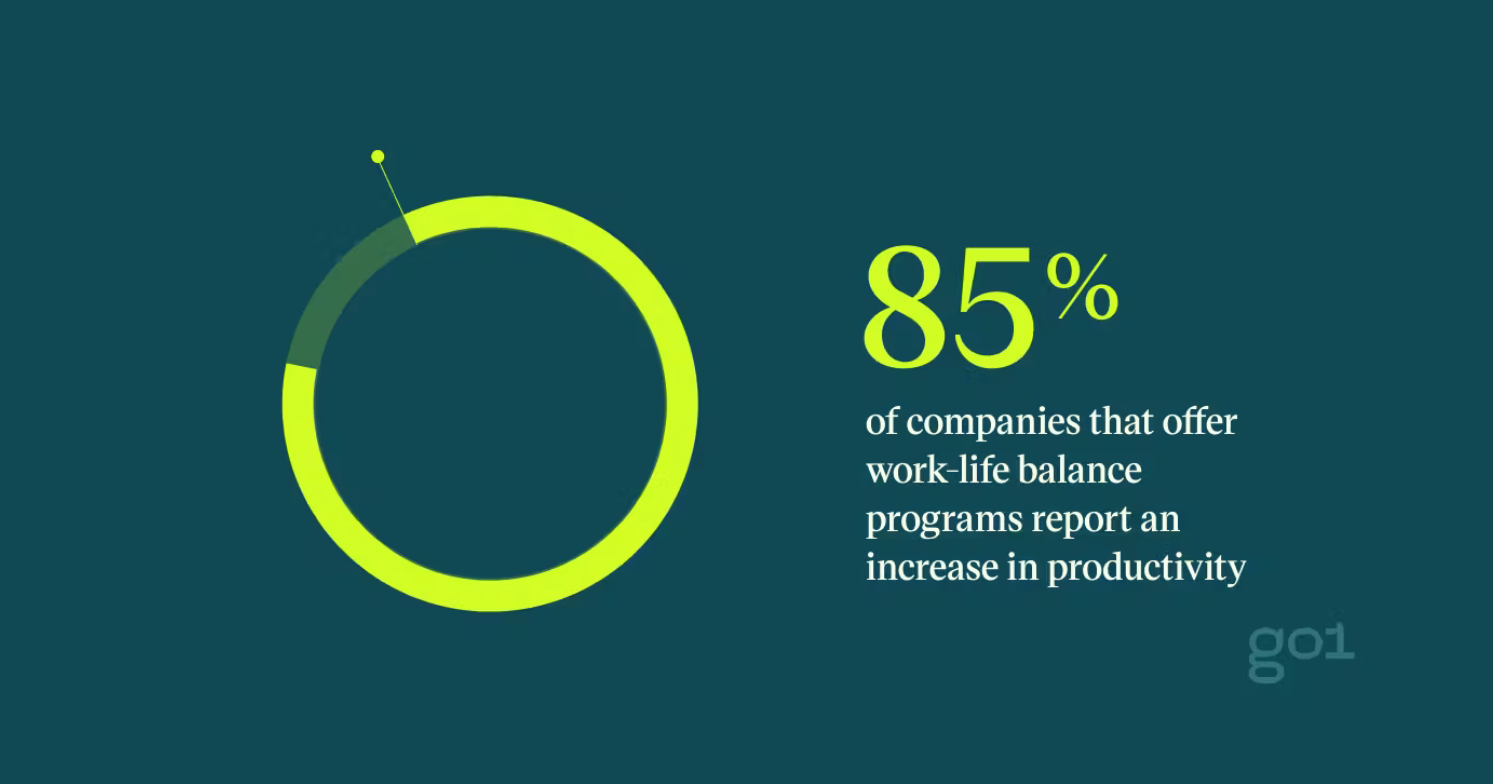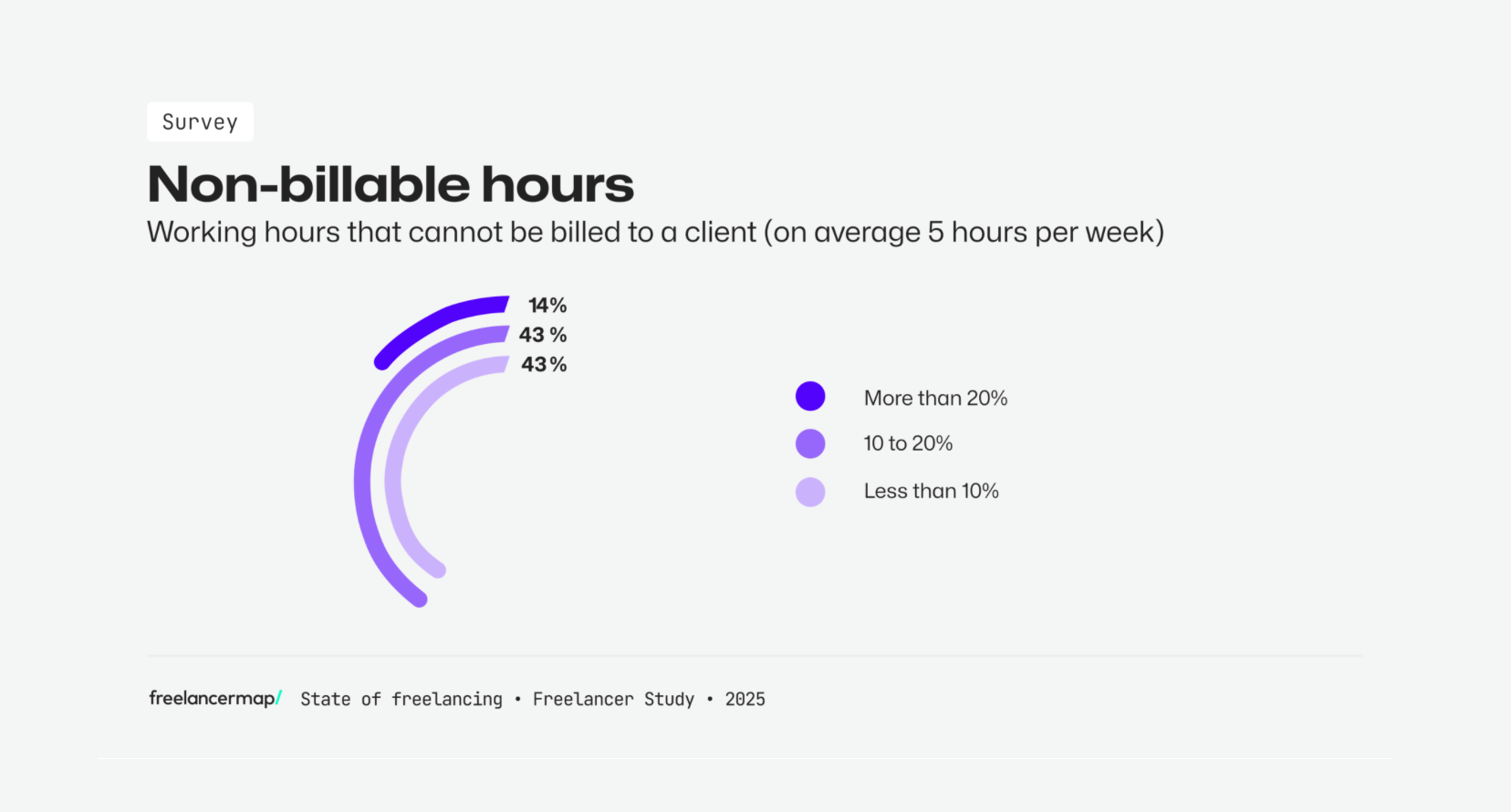How Many Work Hours Are in a Year: Complete 2025 Guide for Full-time and Part-time Employees

Ever felt like you're constantly working but still falling behind? Wonder why you are always tired but don’t see measurable outcomes? Calculating annual work hours isn’t just for HR spreadsheets. It’s about protecting your time, setting boundaries, and ensuring your work supports your life — not the other way around.
Have you ever wondered how many hours you work in a year or how many hours your employees work? Calculating annual work hours is not just a matter of curiosity but an issue of effective time management, rational planning, optimizing workflows, and increasing productivity.
In this guide for 2025, we will make calculations for full-time vs. part-time employees. We will consider all relevant factors, including labor law-mandated holidays and paid time-offs (PTOs). This article will show why these calculations are so important and how to use time tracking software like Controlio to increase productivity. Let's dive in.
Why Tracking Your Work Hours Really Matters

Why should you even bother calculating work hours? It’s not all about payroll and worktime productivity. It’s about your health, family time, fair pay, and even legal rights that often depend on knowing this number — and making sure it’s right. Knowing how many hours you work can change your entire quality of life. Here’s why:
- Legal Regulations. U.S. labor laws protect your rights and ensure fair compensation — but only if your time is tracked accurately. The Fair Labor Standards Act (FLSA) governs overtime pay and minimum wage for non-exempt employees, while the Equal Pay Act guarantees equal pay for equal work. State laws add rules on breaks, shift limits, and sick leave. Without proper time tracking, none of these protections work as intended — at your job or in court.
- Work-Life Balance. Your time is your most valuable asset. If you're constantly working late, skipping breaks, and answering emails at night, you’re giving your life to your job. Time tracking helps you set boundaries and reclaim hours for family, rest, and personal growth.
- Health and Burnout Prevention. Chronic overtime drains more than just energy — it leads to stress, lower productivity, and more sick days. By tracking your time, you can spot harmful patterns early, stay balanced, and maintain mental health and healthy work relationships.
Quick Estimation of Annual Work Hours
As usual, the answers to the most important questions are the simplest. When it comes to calculating the number of working hours in a year, the formula will be short and easy to understand, at least until we start subtracting holidays, vacations, and other breaks.
Simple Formula
For the standard schedule that most people work under:
40 hours per week × 52 weeks per year = 2,080 hours annually
But not even all full-time employees work 40 hours a week, let alone part-time. Some manage to combine several jobs, while others simply pay more attention to themselves and their loved ones. For them, we have prepared alternative calculations based on popular schedules:
Annual Work Hours
Real Work Hours with Holidays & PTO
The basic calculation gives you a rough idea of your yearly work schedule. But it probably won't come as a surprise to you that most people don't actually work this many hours. You need to subtract the additional days off mandated by labor laws from the figure you get. First, these are public holidays, which are obligatory for every company — most businesses do not work on these days.
Secondly, these are paid time-offs (PTOs) designed to ensure a healthy work-life balance. Thirdly, companies have the right to set their own schedules, and employees can take additional vacations. So, let's take it one step at a time.
How Holidays Affect Your Annual Work Hours
US federal laws establish 11 mandatory public holidays that must be days off or paid at an overtime rate:
- New Year's Day
- Martin Luther King Jr. Day
- Presidents' Day
- Memorial Day
- Independence Day
- Labor Day
- Columbus Day
- Veterans Day
- Thanksgiving Day (and usually the Friday after it)
- Christmas Day
For a standard 8-hour work shift, they subtract 88 annual work hours. Of course, there are always regional variations, even within the US, not to mention other countries. But in most cases, they only increase the length of the holidays instead of decreasing it.
What About Paid Time Off (PTO)?
PTO is your time to rest, recover, and avoid psychological burnouts. Knowing how much time you're legally entitled to take off can help you plan smarter and stand up for your rights. Although US federal law does not have clear standards for paid time off, US workers receive 10 or 15 PTO days annually on average. In some companies, they are already included in paid sick leave or even holidays, while in others, they are calculated separately. For the sake of clarity and accuracy, let's use the latter option.
10 PTO days × 8 hours/day = 80 hours off per year
15 PTO days × 8 hours/day = 120 hours off per year
Optional Unpaid Leave
Maintaining a healthy work-life balance often means more than just weekends, holidays, and paid vacations. The problem of emotional burnout is becoming increasingly acute in our productivity- and success-focused society. So, many employees voluntarily reduce their annual work schedule by taking unpaid vacations. We'll take a look at two popular options:
1 day per month × 12 months × 8 hours/day = 96 hours off per year
2 weeks in a year = 10 days × 8 hours/day = 80 hours off per year
Average Number of Sick Days in the US
Once again, we return to the fact that American labor laws do not oblige businesses to provide paid sick leave to their employees. Therefore, in many cases, all the above breaks are supplemented by 7 days of unpaid sick leave per year. US government employees have a little more privilege in this regard, as they have 13 paid sick days per year. Here is a quick calculation of the number of working hours per year that are lost due to illness:
7 sick leave days × 8 hours/day = 56 hours off per year
13 sick leave days × 8 hours/day = 104 hours off per year
Adjusted Annual Work Hours Altogether
Based on the most popular scenario for full-time employees, here is what it looks like:
- 2,080 working hours per year;
- Minus 88 hours during state-mandated holidays;
- Minus 80-120 hours of PTOs;
- Minus 80-96 hours of unpaid leaves (optional);
- Minus 56-104 hours of sick leave (optional).
So, with all the mandatory deductions, we get 1,872-1,912 real annual work hours, and with the optional ones — 1,672-1,776 hours.
Part-time vs. Full-time Work Hours Difference
The calculations for annual work hours in this section look pretty straightforward — we even partially reviewed them above. However, the line between full-time and part-time employment can be quite thin and not always evident. Moreover, the difference between them is not only in the timesheet. Let's take a deeper look at these concepts and start with some rough calculations.
Annual Work Hours, Including PTO and Sick Leave
Adjusted Annual Hours: —
Key Differences That Impact Annual Totals
In some countries, regions, and industries, it is difficult to draw the line between full-time and part-time jobs. If we look at general US standards, this line is usually drawn at 30 working hours per week. Anything greater than or equal to this figure is considered full-time, and anything less is considered part-time.
Why does this matter? To answer this question, it is worth taking a look at the privileges that full-time employees have:
- More paid time off (PTOs) and sick leave days;
- Greater likelihood of receiving payment for overtime calculations in case of extended shifts;
- Paid public holidays — state, region, or industry mandated;
- Health insurance and retirement plan benefits;
- Minimum or mandated wage protection;
- Unemployment insurance and workers' compensation.
In general, HR compliance rules are much stricter for full-time employees. Part-time workers receive only basic protection of their rights.
Why Tracking Annual Work Hours Matters
For businesses and employees, tracking the number of working hours in a year is more than just a curiosity. Correct calculations are vital for payroll, HR compliance, increasing employee productivity, and even for making strategic plans for the company's development.
Tracking Effect on Payroll and Compliance
Modern time tracking software allows you to account for every hour worked to the minute, even partial hours. This significantly reduces the number of accounting errors in the following scenarios:
- Overtime calculations. According to regulations such as the Fair Labor Standards Act (FLSA), overtime must be paid at an increased rate.
- Flexible working hours. In this case, most businesses use an hourly rate. Employee monitoring helps ensure fair pay according to the contribution of each employee.
- Remote work or freelance. These categories are the most difficult to control and manage. Therefore, it is in these categories that effective software solutions will prevent conflicts and ensure correct calculations.
How Time Tracking Helps Boost Productivity
Using time tracking software, you can evaluate qualitative factors as well as quantitative ones:
- The share of time spent efficiently and inefficiently;
- Obstacles that slow down or stop work processes;
- Team or employee productivity.
In many cases, this is a much more important statistic than the total number of annual work hours. It improves workforce management by allowing you to properly reallocate resources, optimize rules and regulations, ensure fair pay for the most productive employees, and more.
Try Our Software for Accurate Hour Tracking
Accurate time tracking isn't just about numbers — it's about unlocking data-driven insights that help businesses and employees thrive. Controlio's time tracking software offers intuitive dashboards, real-time monitoring, and automated reporting. It allows you to simplify time tracking while boosting productivity and payroll accuracy. It is perfect for managing full-time and part-time teams.
Time Tracking Data Significance for Strategic Resource Allocation
Time tracking and workforce management are not just a modern alternative to classic time cards. Cloud-based platforms for tracking the number of daily, monthly, or annual work hours are also powerful analytical systems that provide businesses with valuable insights to properly allocate resources, increase project metrics, and improve overall financial results. Here's how time tracking software can help you.
Identifying Bottlenecks & Overburdened Teams
By comparing how much time each employee and each team spends on certain stages of workflows, you can:
- identify inefficient use of working hours;
- assess the overall balance of workload distribution;
- find ways to optimize routine processes.
For example, if the marketing department spends 60% of its time on monthly reports, this will be a clear signal for optimization and automation that will increase employee productivity.
Budget Forecasting & Cost Reduction
By accurately calculating the real number of working hours in a year, a business can:
- create accurate budgets in which overtime labor costs will not take up the lion's share of profits;
- evaluate the degree of fulfillment of plans and adjust strategic plans in accordance with the real situation;
- get rid of unnecessary costs by optimizing and automating processes that make employees spend time but do not bring benefits.
For example, an analysis of annual working hours in a full-service web agency can show that website development takes 30% longer than planned, and the SEO department has to wait for programmers for a long time. Adjusting plans allows you to reallocate time more efficiently and set a course for strategic process automation, for example, using AI.
Aligning Team Skills & Availability
The right approach to workforce management is not just about tracking working hours but also about understanding capacities:
- Matching tasks with employees' skills, experience, and strengths;
- Identifying employees who can take on more responsibility and higher positions without disrupting work-life balance;
- Determining the right roles for employees to increase productivity.
For example, if one of the accountants constantly records overtime, management can redistribute some of their tasks to other employees or expand the staff.
Automated Reports & Dashboards

- visualize employee productivity trends to make data-driven decisions during meetings and brainstorming sessions;
- generate situational reports to help you conduct departmental audits, evaluate the implementation of project plans, or optimize pipelines;
- efficiently plan resource allocation and budgets, improving financial results with minimal investment.
Controlio Simplifies Strategic Decision-making
With Controlio, time tracking goes beyond clocks and timesheets. Our easy-to-use dashboards, automated reports, and customizable analytics help you spot trends, optimize resources, and drive smarter decisions — all without the hassle of manual tracking.
Success Story: Productivity and Profit Boost with Time Tracking
Our case study is about a mid-sized IT company that optimized its workflows and significantly increased its competitiveness in a cutthroat market with Controlio's time tracking software. It demonstrates how simple solutions can lead to major changes in productivity and profitability.
The Challenge: Inaccurate Billable Hours

The company's key challenges were:
- Manual calculation of annual working hours. Developers entered data manually, leading to accounting and billing errors for clients.
- Unclear planning. Lack of coordination led to idle time in some departments and overruns in others.
- Constant delays. Poor analytics and lack of employee monitoring were the reasons for the constant failure to meet deadlines.
The results were lost revenue, low customer satisfaction, and a constant outflow of qualified personnel.
The Solution: Implementing Controlio
The turning point was using Controlio's time tracking software for all employees. This gave the company the following opportunities:
- Automation of timesheets. By eliminating manual accounting errors, the business made more accurate financial plans and issued correct invoices.
- Improved analytics. Dashboards with real-time data updates and custom reports allowed managers to analyze team performance. Some employees were shifted to flexible working hours.
- Customization of alerts. The software automatically signaled deviations from plans. This allowed for instantly identifying critical points and selecting appropriate problem-solving methods.
- Optimization of work-life balance. Dashboards provided insight into the underload and overload of individual employees or departments. This helped redistribute tasks and areas of responsibility effectively.
The Results: A Productivity and Profitability Boost
An in-depth audit of the situation after six months of using Controlio's time tracking software revealed the following improvements:
- 20% reduction in invoice errors. Matching the actual time spent helped avoid loss of profit and customer dissatisfaction.
- Reduction of project delays by 30%. Correct distribution of tasks significantly increased employee productivity.
- Increase in gross margin by 15% The optimization of resources and budgets helped reduce unnecessary costs for each project.
- Reduced staff attrition by 50%. The team's mood improved significantly due to less overtime and better motivation.
See How Controlio Can Transform Your Workflow
This business's success story isn't unique. It is just one of the companies that discovered the benefits of precise time tracking. You can achieve similar results with the right tools. Controlio helps businesses track time effortlessly, optimize resource allocation, and drive profitability.
Conclusion
You deserve to know how much of your life goes to work — and how much is truly yours. Whether you're full-time, part-time, or juggling multiple jobs, tracking your time means taking back control. Calculating your annual work hours correctly is a unique opportunity to take control of your productivity and free time. For full-time employees, the actual number of working hours in a year ranges from 1,482 to 1,944, excluding overtime. Part-time employees may face even greater variations — from 512 to 1,020 hours.
However, one statement remains true for any form of employment - accurate time tracking matters. It ensures accurate payroll, reveals productivity insights, and helps businesses make smarter decisions about resource allocation. Why leave it to speculation when you can track every hour effortlessly?
Controlio takes the guesswork out of time management — for everyone. Whether you’re managing a team or your own workload, our time tracking software helps you track time accurately, avoid burnout, and make smarter decisions. From boosting team productivity to helping individual employees reclaim their time, Controlio turns hours into insights that truly matter.
Article Photo ©Christopher Allen | Flickr